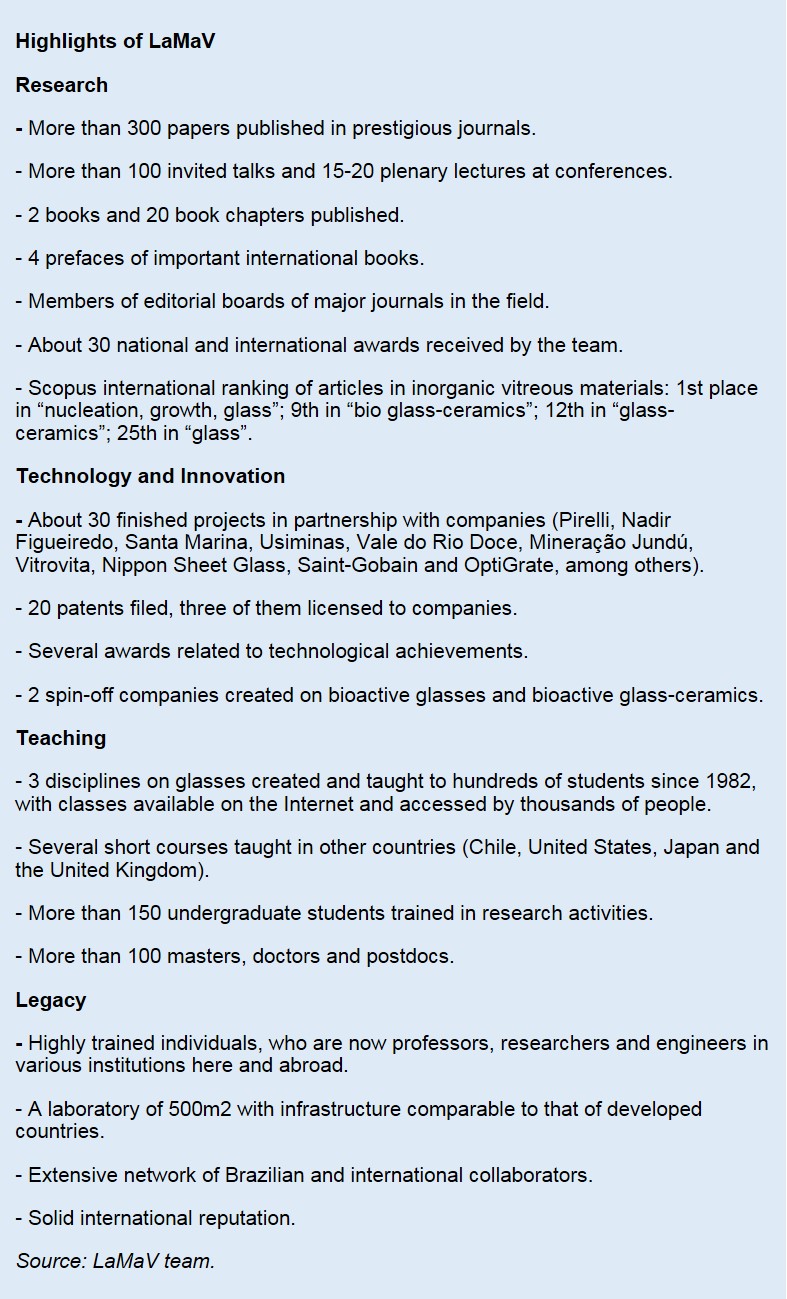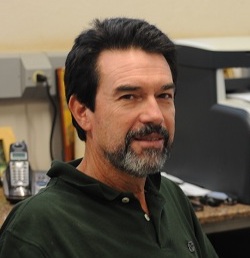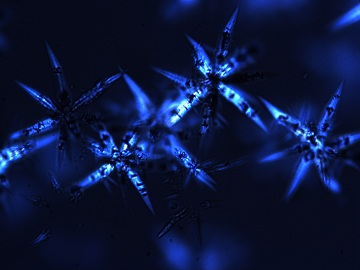 Brazil’s first laboratory dedicated to the study of vitreous materials completes 40 years in December 2016. This laboratory, which began its activities with only a small muffle furnace with temperature up to 1100 °C, today has 18 ovens, 4 which reach 1750 °C, and also thirty instruments to manufacture and characterize glasses distributed over 500 m2. The anniversary in question is LaMaV´s (Vitreous Materials Laboratory), of the Department of Materials Engineering (DEMa) at the Federal University of São Carlos (UFSCar).
Brazil’s first laboratory dedicated to the study of vitreous materials completes 40 years in December 2016. This laboratory, which began its activities with only a small muffle furnace with temperature up to 1100 °C, today has 18 ovens, 4 which reach 1750 °C, and also thirty instruments to manufacture and characterize glasses distributed over 500 m2. The anniversary in question is LaMaV´s (Vitreous Materials Laboratory), of the Department of Materials Engineering (DEMa) at the Federal University of São Carlos (UFSCar).
On the 40th anniversary of LaMaV, the team declares it is fully satisfied with its achievements [see box beside]. The pioneering work of the laboratory was essential in generating, disseminating and applying scientific knowledge on glass in the country, in academia and in industry. “We prepared about a hundred masters, doctors and post-docs, who now work as professors and researchers at major institutions such as USP, UFSCar, ITA, UEPG, UEMa, UFBa, PUC, IPT, CEFET, UFF, UNESP, UFLavras, UFABC, CTA, UNIOESTE and in other institutions in Brazil and abroad, and in numerous companies. This is a very important legacy! ” said Edgar Dutra Zanotto, one of the founders of SBPMat and the Materials Research journal, who founded LaMaV and heads it until today.
But the efforts and results of LaMaV go beyond national borders, since it always featured internationality. The laboratory has received students and visiting professors from dozens of countries. Its team has brought to Brazil the most important international conferences on glasses, it participates in the editorial boards of almost all major specialized journals on vitreous materials and has received seven of the most prestigious international awards and honors of the area – in addition to more than 20 national awards, including the Almirante Álvaro Alberto* award. The group research, especially that on nucleation and crystallization of glasses and glass ceramics, is recognized worldwide. “A significant part of active researchers in this area have heard, attended a lecture or read an article or patent resulting from our research. We have indeed put the city of São Carlos and Brazil on the world map of glass research!” adds Zanotto.
LaMaV is currently very active on glass crystallization issues, structural relaxation and residual stress processes, glass ceramics, biomaterials, and mechanical, rheological, electrical and biochemical properties of vitreous materials. “Today we have an impressive laboratory and excellent financing, mainly from FAPESP (the São Paulo State research foundation) but also from Capes, CNPq (federal funding agencies) and some companies. However, the endless bureaucracy of the funding agencies for purchasing materials and equipment, the accountability and also the uncertainties related to the future of universities (e.g., austerity measure PEC 55 and others), coupled with the shortage of secretaries, technicians and engineers (lab managers) to assist in the organization and maintenance of laboratories, have always been and continue to be formidable obstacles,” ponders Zanotto.
The making of…
It all began on December 15, 1976, when Zanotto was hired as assistant professor at DEMa-UFSCar. His main objective was to start glass research work in the department. In 1970, the first undergraduate course in Latin America in Materials Engineering was created, and two years later DEMa was created. By 1976 the department already had research groups in metals, polymers and ceramics, but no one worked with glasses, Zanotto remembers. “The creation of LaMaV was a natural outcome of setting up the undergraduate course in Materials Engineering at UFSCar,” declares Professor Zanotto.
At the end of 1976, Edgar Zanotto was a newly graduated materials engineer (at UFSCar) who had just completed scientific initiation research work under the guidance of visiting Professor Osgood James Whittemore, researcher in the area of ceramic materials of the University of Washington (USA). “My undergraduate research carried out that year, focused on the chemical durability (leach) of candidate glasses for the encapsulation of radioactive waste,” recalls Zanotto. “And, amazingly, this subject is still hot! ”, he adds.
Soon after being hired, Zanotto created LaMaV. The first experiments – carried out by Zanotto himself – consisted of melting glass at low melting point, using a muffle furnace and a platinum crucible (recipient that can be used at high temperatures), borrowed from the chemical analysis laboratory of the university.
In 1977, the founder of LaMaV started the Master’s program in Physics at the Institute of Physics and Chemistry at São Carlos (IFQSC) of USP, under the guidance of Professor Aldo Craievich, who was probably the only scientist active in the glass area in Brazil before 1976. In fact, he is the author of the first two papers on glasses signed by researchers from Brazilian institutions, both published in 1975. During the Master, Zanotto produced and thermally treated glasses (to generate crystallization) at LaMaV, carried out microscopic investigation at the DEMa metallurgy laboratory, and characterized glasses by XRD and SAXS at IFQSC-USP. Zanotto finished his Master’s research work and defended the dissertation a year and a half later. That same year he began his doctorate, also in the area of glasses, at the University of Sheffield (UK), under the supervision of the famous Professor Peter James. In 1982, having defended his doctorate, Zanotto returned to LaMaV.
“In the first 10 to 15 years, isolated work, inexperience and the uncertainties and difficulties associated with the mercurial research funding, in addition to the reduced physical space and little laboratory infrastructure disrupted our activities”, recalls Zanotto. Nearly a decade after the laboratory was created, the second Professor of the group was hired, Oscar Peitl Filho, Zanotto’s former master’s and doctoral student. A few years later, Ana Candida Martins Rodrigues became the third professor of the LaMaV team. Then in 2013, Marcello Andreeta was hired. “Today we are 4 teachers, 1 technician, 1 administrative assistant and about 30 research students and post-docs, 7 from other countries,” says Zanotto.
The year of 2013 was a milestone in the history of LaMaV due to the approval by FAPESP and the beginning of activities of CeRTEV (Center for Research, Technology and Education in Vitreous Materials). Directed by Zanotto, CeRTEV brings together LaMaV (headquarters of the center) and other laboratories from UFSCar, USP and UNESP, to conduct research, development and education activities in the field of vitreous materials, with funding from FAPESP until 2024. “With CeRTEV, we have established one of the largest academic research groups on glass on this planet, with world-class infrastructure, 14 professors and about 60 research students!”, acclaims Zanotto.
“Looking back, if I could return to December 1976, with the experience accumulated over these 40 years, I believe I’d do it all over again, but more efficiently!”, expresses the founder of LaMaV.




